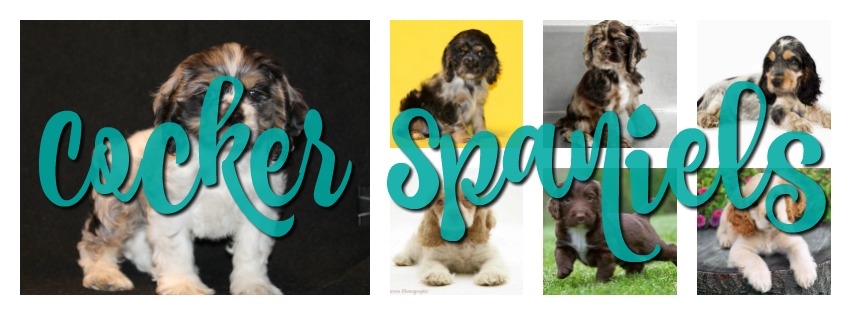The Cocker Spaniel is a medium sized, sturdy dog. The head is rounded with a pronounced stop. The muzzle is broad and deep with square, even jaws. The teeth meet in a scissors bite. The eyeballs are dark, very round with slight almond shaped eye rims. Merle Cocker Spaniels can have blue eyes. The long, low-set ears are well feathered. The topline slopes slightly from the front of the dog to the back and the legs are straight. The tail is docked. Note: docking tails is illegal in most parts of Europe. The dewclaws may be removed. The silky coat is flat or slightly wavy. The hairs are medium length on the body but short and fine on the head. There is feathering on the ears, chest, abdomen and legs. The coat comes in any solid color, black with tan points, merle, solid color with tan points and parti-color. Examples of parti color combinations are white with buff or red, white with black, or white with black and tan points. Field lines have shorter coats than show lines.
Bold and keen to work, the American Cocker Spaniel is equally suited to life as a gundog or as a household pet. Cheerful, gentle and sweet, this breed is of average intelligence and is respectful of its master's authority. Amusing, trustworthy and charming with an ever-wagging tail, it is active, playful and devoted, but should be socialized well when it is young to avoid a tendency for shyness. Cockers that understand their place is under humans are good with children. They love everyone and need firm, loving leadership and daily exercise to be happy. They can be difficult to housebreak. They are mostly easy to train and get along well with other animals.
Bold and keen to work, the American Cocker Spaniel is equally suited to life as a gundog or as a household pet. Cheerful, gentle and sweet, this breed is of average intelligence and is respectful of its master's authority. Amusing, trustworthy and charming with an ever-wagging tail, it is active, playful and devoted, but should be socialized well when it is young to avoid a tendency for shyness. Cockers that understand their place is under humans are good with children. They love everyone and need firm, loving leadership and daily exercise to be happy. They can be difficult to housebreak. They are mostly easy to train and get along well with other animals.
